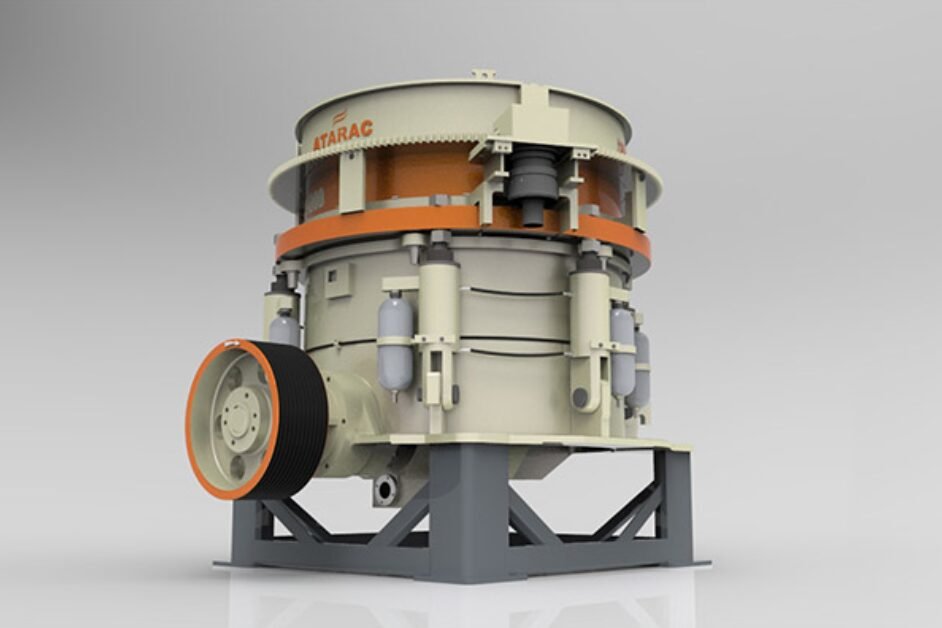Given pressure on the mining industry to reduce its environmental impacts, sustainable practices in the processing of minerals have never been more important. Businesses are now aiming at minimizing energy, water, and waste as much as possible while at the same time increasing production output. This paper aims at reviewing several sustainable aspects in the mineral processing industry and identifies some of the equipment and methods that may be used to minimize the effects of the industry on the environment.
These findings are targeted at the business within the mining industry with the goal of achieving optimisation of their operations while at the same time enhancing their sustainability.
Energy-Efficient Crushing Techniques
Comminution is one of the key unit operations in mineral processing that consumes a considerable amount of energy in a mining project. In the past, crushing equipment has been very energy consuming and has been responsible for a large part of the energy used in mineral processing. However, crushing technology has improved over the years and this has led to development of more energy efficient solutions.
One such innovation is the employment of multi-cylinder hydraulic cone crushers. These crushers are also claimed to be more energy efficient than conventional cone crushers while delivering improved production rates. The multi-cylinder hydraulic cone crusher does this by enhancing the crushing process and controlling the crushing force so that less energy is wasted in the form of heat and noise.
The efficient application of energy in crushing also helps reduce mining companies’ carbon emissions and operating costs. This is advantageous not only for the environment but also for improving mining operations’ profitability.
Water Conservation in Processing
Another environmental issue related to mineral processing is water usage. The industry uses a lot of water in operations such as grinding, flotation, and leaching. This makes water recycling a necessity in the operation of mines, as water scarcity is fast becoming a worldwide phenomenon.
One successful strategy is the use of closed-loop water systems, which enable the integration and reuse of water in the processing plant. This not only reduces the need for fresh water but also helps avoid polluting the environment with dirty water. Also, there is an opportunity to apply high-tech filters to treat process water, allowing its utilization.
Another sustainable practice is in the dry processing where water is not used at all in the manufacturing process. For example, the dry magnetic separators and air classifiers can replace the wet process and thus reduce the consumption of water to a great extent.
Waste Management and Recycling
The environmental issue that is most significant in mineral processing is the issue of waste management, where waste is in the form of tailings which are the waste products that are left behind once the valuable minerals have been separated. The effects of tailings if not well managed include pollution of water sources and the depletion of the soil nutrients.
To avoid these risks, the following are some of the measures that most of the mining companies are taking to embrace sustainable waste management. One of these methods is the thickening and filtering of tailings which decreases the volume of the waste and the amount of water in it thus making it easier to store and also it will not leak into the environment.
Besides, there is a new trend of recycling and reprocessing of tailings to recover other valuable minerals. This not only minimizes the amount of waste that is produced but also helps to make the most of resources, where waste was once a commodity, it is now a source of revenue.
Another innovative practice is the utilization of tailings in construction materials, including cement or bricks. This means that companies can develop other products using tailings, generating an extra stream of revenue while minimizing their impacts on the environment.
Reducing Emissions in Mineral Processing
Mineral processing is another industry that has embraced the need to implement sustainable solutions in its processes. Reducing greenhouse gas emissions is one of the most important aspects of sustainable mineral processing. Most of the existing mineral processing equipment, especially those that are energy-intensive, has been found to emit large amounts of CO2 and other greenhouse gases.
In response to this, the mining companies have shifted to the use of electric powered equipment and renewable energy. For instance, electric cone crushers are less environmentally friendly than the diesel ones but they are more efficient in the overall process of crushing. Notably, the multi-cylinder hydraulic cone crusher is an efficient machine that can work using electric power, which makes it environmentally friendly.
Apart from investing in equipment, many mining organizations are also investing in renewable power sources like solar and wind power, among others, to power their processing facilities. Shifting towards renewable energy sources may decrease the overall consumption of fossil fuels and the emission of greenhouse gases.
Sustainable Ore Processing Techniques
In addition to measures of energy conservation and the utilization of renewable energy, effective and environmentally friendly methods of processing ores are the key to minimizing the effects of mineral processing. These techniques aim to reduce the quantity of reagents used, the production of waste, and the enhancement of the process.
One such method is bioleaching, in which metals are leached from ores with the help of bacteria that exist in nature. Bioleaching is most suitable for ores with low ore grades that would not be economically feasible to process through conventional means. This technique does not require dangerous chemicals like cyanide and produces less waste, making it a better option for the environment.
Another sustainable method of processing ores is gravity concentration, which is based on the relative densities of the minerals involved in the process. Gravity separation is cost-effective and does not involve the use of chemicals, so it can replace flotation in the future.
Furthermore, improved sorting technologies based on sensors can easily identify useful ores from the unwanted early in the process, thus reducing the quantity of material to be processed and, hence, the energy and other resources to be used.
There is a need to enhance the sustainability of processing operations, which would help minimize the effects of mining on the environment and at the same time, continue to be profitable. Through the reduction of energy consumption per ton of ore crushed through the use of a multi-cylinder hydraulic cone crusher and the proper management of water and wastes and the reduction of emissions, mining industries can reduce their impact on the environment.
In addition, the use of sustainable methods of processing ores, especially through bioleaching and gravity separation, can improve resource efficiency and reduce waste. These sustainable practices will help mining companies fulfill the requirements of regulations, the expectations of stakeholders, and the needs of the industry as it continues to develop.



